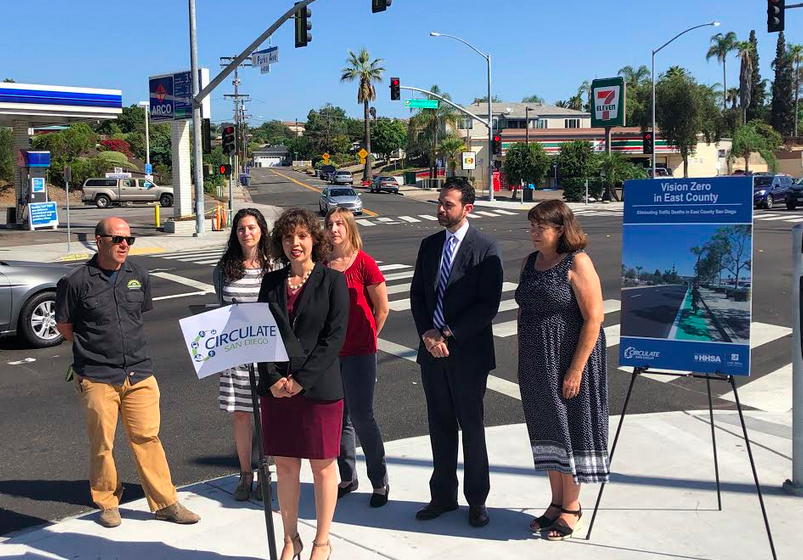Vision Zero in East County: Eliminating Traffic Deaths in East County San Diego [PDF], just released by Circulate San Diego, is a primer and toolkit that could be used by any California city as a blueprint for getting started on eliminating traffic deaths.
"We don't intend to reinvent the wheel," said Maya Rosas, the author of the report, which offers a short description of Vision Zero principles and offer guidance on steps cities can take. "Vision Zero works because it is data driven, and prioritizes the most vulnerable. It's the framework that counts. If you want to reduce injuries, adopting Vision Zero puts you on the right track," she said.
She says the report is useful for elected officials "who may not be aware of how traffic collisions impact people in their cities," she said. "It includes information about policy, infrastructure, and data."
"Nationally more than 37,000 people were killed during their daily commute in 2018," reads the report.
Generally when tens of thousands of people die each year, it is considered an epidemic and resources are dedicated to protect the community through medicine, vaccines, and policies. It is time for city leaders to shift the mindset of looking at traffic collisions as “accidents,” and begin taking action to save lives.
The report stresses the importance of using data for all aspects of reducing traffic injuries, including enforcement, and notes the potential for unintended consequences of a focus on only parts of the framework.
While investing in these communities, cities should be cautious to ensure the increased attention is beneficial to the community, through increased engagement and empowerment, and not a detriment that causes a financial burden through increased ticketing and citations.
The report argues the business case for adopting Vision Zero framework (traffic deaths cost society billions every year, plus real estate values in walkable neighborhoods) as well as the environmental case (fewer greenhouse gas emissions as cities become safer and more people adopt healthy active forms of transportation).
Finally, the report recommends actions cities can take as well, such as:
- Introducing traffic calming where crashes occur most frequently
- Prioritizing safety in funding
- Adopting Complete Streets policies and street design guidelines
- Researching to use data to determine most dangerous behaviors contributing to crashes
To that end, this report includes pedestrian and bicycle crash data for the cities it covers - El Cajon, La Mesa, Lemon Grove, and Santee - and the specific places where injuries tend to occur.
It also contains a handy draft Vision Zero resolution that cities can adapt to their needs. That's what the city of Imperial Beach did, after this report's South County version, covering Chula Vista, National City, Imperial Beach, and Coronado, was released last February.
A North County version will be released in a few weeks as well.
At this morning's press conference for the report's release, Jennifer Mendoza, a councilmember in the city of Lemon Grove, told the crowd this report handed her what she wanted. She has been very concerned about safety in Lemon Grove, especially after a 13-year-old boy was recently killed there. She said the report walked her through the steps that she wants to take in her city.
Using the template and making a resolution of a city council would be a good first step, says Rosas. "But what matters in the end is that Vision Zero is implemented so lives are saved. We would be happy if they also adopted a complete streets policy instead, or first - this is just the first step in bringing Vision Zero throughout San Diego County."
"Nobody should lose their life, regardless of what city they're in - big city or small city," she said, adding that Circulate San Diego will continue to advocate for safer streets and better policies throughout the region.







